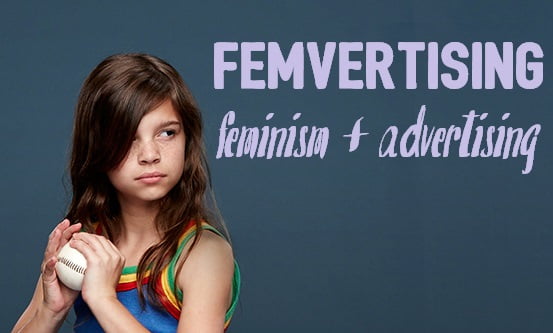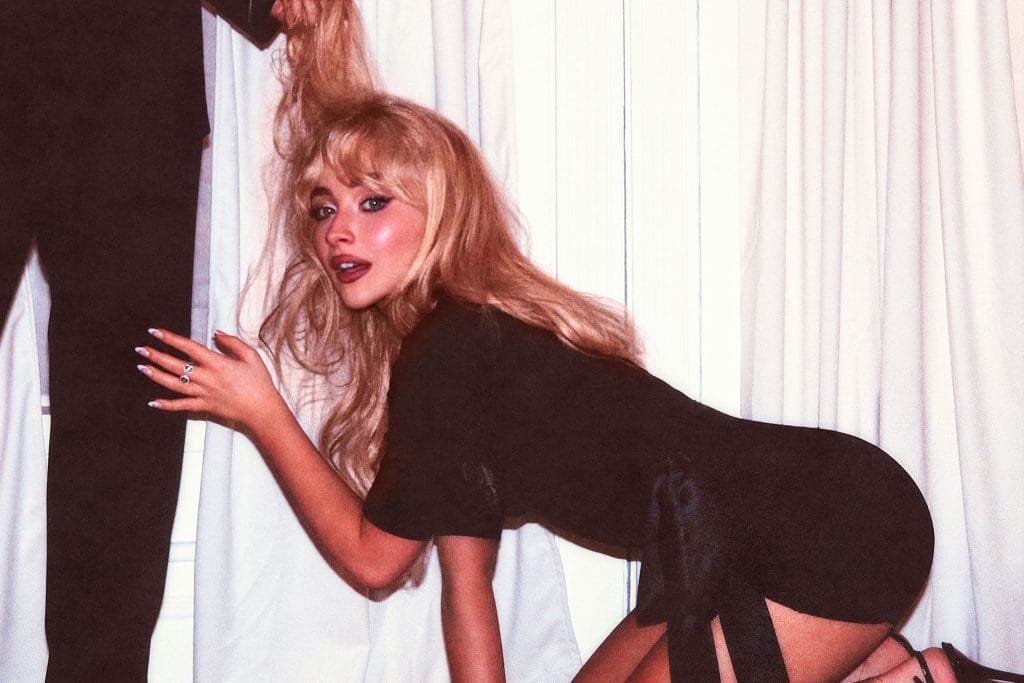Today, an increasing number of advertisers are creating pro-female ads to catch-up with the “latest trend” of feminism. The advertising Industry that once depended heavily on the objectification of women to market its content has now taken a 360-degree turn to attract the attention of female consumers and to make them feel “understood and valued”. This phenomenon of employing feminism as an advertising tool has been labelled as ‘femvertising’.
Femvertising, simply put, is the use of feminist ideals by brands to sell their products. Exploring of feminist issues, fabrication of women’s stories, presentation of female protagonists and promotion of pro-female messages— all of this when done by advertisers results in what we call ‘femvertising’. The ads going viral nowadays, like Dove’s ‘Let’s Break The Rules Of Beauty’ or Anouk’s ‘Bold Is Beautiful – The Visit’ ad depicting a lesbian couple, are some examples of femvertising done right.
Some creative directors believe femvertising to be a perfect blend of advertising that can sell goods while simultaneously empowering women. While the statement may hold some truth to it, we mustn’t forget that this hashtag-heavy method of advertising solely exists to create a positive brand image and build a connection with the target audience for sales growth.
Nike’s campaign titled ‘Da Da Ding’ garnered over 2.8 million views on YouTube within one week of its publishing. Dove’s ‘Real Beauty Sketches’ campaign in 2013 “packed an emotional punch that quickly sent it viral: within a week of its release, more than 15 million people had watched it online,” reports The Guardian.
Do you honestly believe if femvertising wasn’t creating huge promotional and recognition opportunities, ultimately resulting in an increase in the sales growth, the brands would still continue to address women’s issues for the sake of empowerment? Probably not.

The advertising industry once built itself by objectifying women. Be it women’s products, men’s products or gender neutral products, women’s objectification was the way to go about advertising them. However, the advertisers recently realised that they have only been catering to one of their consumer groups — men, while another group, almost equally as large — women, remains unaddressed. And how could they hope to influence female consumers while objectifying them in their ads? Hence the advent of femvertising!
The advertisers align their for-profit businesses with a non-profit cause for “mutual benefit”. Femvertising, in this regard, is a lot like using social work as a PR tool to re-build the brand image after a fiasco.
Femvertising, while working to impart the feminist messages to a wider audience, can also impact the whole concept of feminism negatively. Several brands try to cash in on this “latest trend” of feminism to appeal to the youth and female consumers. However, they lack the most basic understanding of what feminism stands for and appear to be least interested in trying to understand as well.
A plethora of advertisements can be seen on occasions like Mother’s Day and International Women’s Day. The brands appear to be participating in a race of ‘pink-vertising’ to put out their women-centric ads where they would not be hidden from the consumer’s view. However, several of these ads are completely ignorant of the significance of the day in question.
1. Oriflame – Women’s Day
Oriflame released its Women’s Day ad on March 8 this year, glorifying the woman’s adherence to the prevailing gender roles. She’s shown to be multitasker who juggles her work, household chores and the child simultaneously without any help from her husband, unless you count the extra tasks he so conveniently passes on to her. This ad reveres a woman’s subjugation by putting it under the label of “Superwoman”. Is this what Women’s Day is about? Promoting gender disparity and applauding women for adhering to it?

A femvert that lacks understanding of feminism only works to push against it. And let’s not forget, Oriflame is a beauty company that itself is a part of a problem feminism is trying to battle with its skin whitening products. Oriflame is preaching the conventional beauty ideals through its products and prevailing gender roles through its advertisements, on Women’s Day nonetheless.
2. Airtel’s Boss Ad
Airtel released it’s Boss TVC in 2014 with a “modern” twist where the woman is her husband’s boss. The advertisement did try to break the stereotyped representation of a woman as only a homemaker, and even showed holding a a position of power in the workplace. However, even when the boss of her husband at work, still comes home to do what pleases him. Asking him what he wants to eat, cooking a meal for him and fulfilling her “wife-duties”. Femverts like these take feminism one step forward and two steps backward.
Also Read: A Critique Of The Airtel Boss Ad
3. Biba – Change The Conversation
Here’s an ad that tries to change the practice of dowry, but what kind of change is it that they’re trying to bring? Biba launched its campaign ‘Change Is Beautiful’ in 2016 and under this campaign, their ad ‘Change the Conversation’. Dowry is a sensitive issue, one that feminists oppose fiercely. However, is this how we must overcome the practice of dowry? By replacing it with the practice of buying and selling of the woman in a marriage?
“They’re trusting us with their precious daughter, we at least owe them this much,” says, the father of the groom, while talking about giving the bride’s family jewellery, a car and 10 lakh rupees in exchange for their ‘heere jaisi beti’. While talking about eradicating one malpractice, are they promoting another? Perhaps one that poses even more dangers to the ideals of feminism.
4. Dove – Body Positive Bottles
Dove became the pioneer of femvertising in India in 2013 with its ‘Real Beauty Sketches’ campaign that immediately went viral. However, it sometimes gets it very wrong, like when they released “Real Beauty bottles”.
Dove targeted the vulnerabilities and insecurities of women not only through its campaigns but also by launching six differently shaped bottles of shower gel. According to Dove, the bottles were designed to “evoke the shapes, sizes, curves and edges that combine to make every woman their very own limited edition,” says The Guardian.
Dove’s Real Beauty bottles might have been to support women’s confidence — or simply to make money — but what they actually did was to force women to seek their body image and self-confidence from a plastic bottle. Suddenly, buying a shower gel bottle became as stressful as buying clothing that “suits” one’s body. However, Dove’s Real Beauty bottles never went into production — thank the heavens above — owing to the numerous negative responses it got over social media.
Also Read: Dove’s Body Positive Bottles Literally Turn Women’s Bodies Into Objects
It is also important to note that Dove is owned by Unilever, which is also the parent company of brands like Fair & Lovely, Axe, Lipton, Pond’s and more. These brands continue to plough on the conventional ideas of beauty— fairer skin and thinner body, or to objectify women in ads of men’s products.
5. Nike – Da Da Ding
This ad by Nike showcased strong sportswomen from India who are not as well-known as their male counterparts, which was an necessary depiction. However, a spin-off video to Nike’s ad exposes it for its exclusivity. The spin-off portrays everyday women who work just as hard, but are never the focus of these “empowered women” ads. This spin-off, called ‘Da Da Ding : The Other Women’, became an instant hit as it represented a wider section of women in India and juxtaposed between the women wearing Nike shoes in the original ad to the women who can’t afford them. “Been doing it. Barefoot,” the video proclaimed in the end.
On a similar note, let’s discuss a trend that all femverts seem to follow. They are always targeted towards women that are able to purchase their products. The “real women” that are portrayed in these ads, therefore, are almost always upper middle class women. Most brands forget to portray women of lower classes and castes in their femverts, as they’re only marketing to the section of female population that can benefit them directly. So, how then do we believe these brands when they proclaim they are feminist?
6. Vogue India – My Choice
And finally, we move on to the femverts that desperately fail to incorporate the most basic ideals of feminism. Feminism strives for gender equality, not putting one gender, scratch that, any gender on a pedestal. We, feminists, are NOT proposing female chauvinism as a solution, something that Vogue’s ‘My Choice’ video does singularly.
This video basically proposes women’s domination, not women empowerment. The video not only happily evades the central issues of feminism by making proposing mostly frivolous choices but also proposes making a choice as the simple solution to gender disparity. As if it were that simple!
A number of lines said in this video are plain problematic. For instance, “to have sex outside of marriage.” What? Is infidelity supposed to be a means of women empowerment now? “My pleasure might be your pain.” Feminism does not propose inflicting the same hurt on the other gender to overcome one’s own. This is not the solution.
In addition, the video comes off as hypocritical in general. A line in the video is, “my choice; to be a size 0 or a size 15.” However, all the women featured in the video adhere to conventional body types.
Magazines like Vogue parroting ideals of “feminism” is hollow as long as they themselves reinforce myths of conventional beauty through their cover pages that display only a certain kind of women and photoshoots that objectify women.
Also Read: Dear Vogue India, It’s Time To Stop Empowering Women!
Using feminist arguments to sell products may be better than perpetuating gender stereotypes – as long as they get feminism right. However, we need to keep in mind that these feminist ideals are being borrowed for all the wrong reasons. While talking about femvertising, Andi Zeisler writes in her book We Were Feminists Once, “celebrating the ads themselves simply celebrates advertisers’ skill at co-opting women’s movements and selling them back to us – and then rewards us for buying in.”
Also, with so many brands leaning heavily on feminism to sell their products, the communication based on gender equality runs the risk of becoming a blind spot for the audience. The problem with femvertising is that the choice for women seems to be either no representation or misrepresentation in advertisements.
About the author(s)
Shagun Gupta is a fiction enthusiast and an amateur photographer, currently embarking on a writing career after having recently earned her post-graduate degree in Mass Communication.





“This video basically proposes women’s domination, not women empowerment.” Please explain in detail how it does so. I watched the video and found no lines on the choice or the desire to >dominate< social, political, or cultural institutions and systems, or even other human beings.
A feminist website is not expected to fall to making hollow critiques without backing statements like the one you have made above with no evidence, especially if only based on what a lot of people on social media say, perhaps because they couldn't digest the message of the video, femvertising or not.